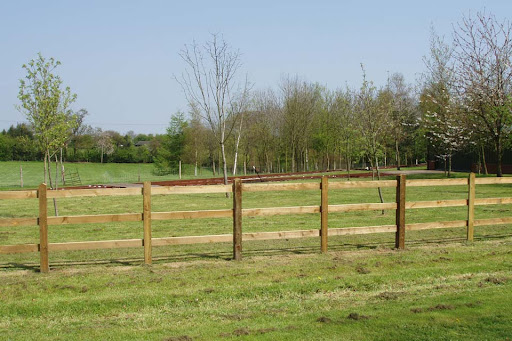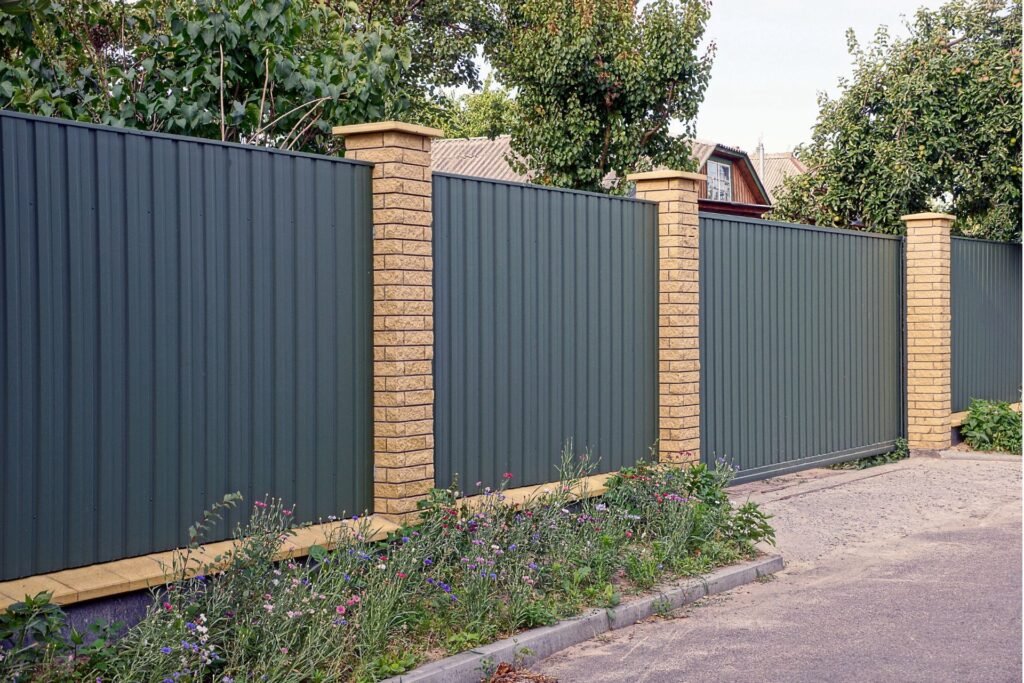Top Fencing in Auckland Designs That Match Every Budget
A Comprehensive Overview to Fencing Install: What You Need to Know About Fencing Provider
When it concerns setting up a fence, you have actually got a lot to consider. From selecting the best products to understanding regional regulations, each step can feel overwhelming. You'll require to examine your building and choose if you want to take on the setup yourself or hire a specialist. But that's just the start. Allow's explore the essential aspects that can make or break your fence project.
Recognizing Various Kinds of Fence Products
When you're selecting a fence, recognizing the various kinds of fencing materials is vital. Each material uses distinct benefits and downsides, affecting your decision. Timber offers a classic appearance and can be tailored, however it calls for routine maintenance and might rot in time. Plastic is low-maintenance and long lasting, withstanding fading and parasites, however it can be pricier upfront. Chain-link fence is cost-effective and sensible for enclosing large areas, though it does not have personal privacy and visual appeal. Metal secure fencing, like wrought iron or aluminum, uses toughness and elegance however might require rust security. Compound materials blend the ideal of timber and plastic, using sturdiness with an all-natural look. Consider your spending plan, desired visual appeals, and maintenance preferences when reviewing these choices. Inevitably, choosing the right material will certainly help you produce a fence that satisfies your requirements and boosts your residential property's value.
Examining Your Property and Secure Fencing Demands
Prior to you start your fence setup, it's necessary to assess your building borders and the objective of your fencing. Understanding neighborhood laws and permits will also assist you avoid any type of legal problems down the line. By thinking about these aspects, you'll assure your fencing fulfills both your requirements and area requirements.
Building Borders and Lines
Recognizing your building limits is vital for an effective fence setup, as it not just helps you identify where your fence will go yet also ensures you're valuing your next-door neighbors' space. Beginning by evaluating your property action or study, which generally outlines the precise boundaries. You could also desire to speak with a professional property surveyor if you're uncertain.
As soon as you have actually developed your borders, note them plainly with stakes or flags. This visual help will direct you during the installation and prevent any type of disagreements with neighbors. Remember, regional zoning regulations might dictate fence placement and height, so examine those regulations too. Taking these steps assurances your fencing is correctly positioned and certified, making the whole procedure smoother for you.
Function of Fencing
Fence serves multiple functions that can considerably improve your property. Initially, it gives security by developing a barrier that deters intruders and secures your items. Second, it uses privacy, permitting you to enjoy your outdoor space without stressing concerning spying eyes. Third, fence can define your property borders, making it clear where your space finishes and your next-door neighbor's begins. Furthermore, it can enhance the visual allure of your home, including character and style while boosting visual allure. A well-placed fence can assist take care of sound from neighboring roadways or next-door neighbors and also keep pets and youngsters secure. By assessing your particular needs, you can choose the best type of fencing to achieve these advantages effectively.

Local Regulations and Permits
Just how can you assure your fence installation complies with local regulations? Some locations require permits for any new fencing, while others may just need them for taller structures.
In addition, think about property lines and any kind of easements on your land. Marking your boundaries can stop disputes with next-door neighbors or potential lawful concerns. By understanding these guidelines in advance, you can avoid costly blunders and establish your fence is built to last, boosting both your building's worth and your peace of mind.
Local Rules and Permits for Fence
Before you start your secure fencing task, it is very important to check neighborhood guidelines and obtain any type of essential permits. Each city or region has its own regulations pertaining to fence elevation, products, and placement. These policies guarantee that your fence adheres to safety requirements and neighborhood appearances.
You could need to send a fencing plan, outlining measurements and products. Some locations might even need a survey to verify residential or commercial property limits.
Disregarding to follow these policies can result in penalties or forced removal of your fence, losing both time and cash. Take the time to study and secure the correct authorizations for a smooth installation process. This action is crucial in making certain your job aligns with neighborhood regulations and neighborhood standards.
Choosing In Between DIY Installation and Professional Providers
Are you considering whether to take on the fence installation on your own or hire a professional? If you're useful and have experience with comparable projects, Do it yourself might conserve you money.
Next, consider the moment commitment. Installing a fencing takes time, and if you're managing a hectic timetable, hiring an expert can ensure it obtains done successfully. Additionally, consider the intricacy of the project. If your lawn has difficult surface or specific style requirements, experts bring look at this website experience that can make a difference.
Lastly, consider local guidelines. A specialist recognizes the authorizations and codes needed, helping you prevent prospective penalties. Inevitably, evaluate your abilities, time, complexity, and policies to make the ideal option for your fencing project.
Step-by-Step Guide to Fence Setup
When you've determined to move on with your fence installation, complying with a structured step-by-step strategy will certainly ensure a smooth process. Beginning by marking the fencing line with risks and string to imagine the format. Next, examine neighborhood policies to validate conformity with height and home lines.
Dig post openings a minimum of two feet deep, spaced according to your fencing type-- usually 6 to 8 feet apart. Place the messages into the openings and load them with concrete for stability. Once the blog posts are established, attach the horizontal rails or panels, making certain they're degree.
Check for any type of loose links and make necessary modifications. Your fencing ought to currently be all set to improve your home and offer the personal privacy or safety you need!
Upkeep Tips for Long Life of Your Fence
To maintain your fence looking wonderful and lasting longer, normal maintenance is crucial. You need to set up a cleansing schedule, examine for any type of damages, and apply safety coverings as required. By remaining proactive with these tasks, you'll assure your fencing stays strong and eye-catching for years to find.
Normal Cleansing Schedule
Start by washing your fence with water at the very least as soon as every period to remove dust and particles. Don't neglect to examine for any type his response of rust on steel fences; a wire brush can help eliminate it, adhered to by a layer of rust-resistant paint. Keeping your fencing tidy not just improves its look however likewise prolongs its life, saving you money in the lengthy run.
Inspect for Damages
On a regular basis checking your fencing for damages is crucial if you desire to keep its honesty and durability. Start by walking your fencing to look for noticeable indications of wear, such as fractures, loosened boards, or rust. Pay unique interest to the base and messages, where moisture can create considerable issues. If you notice any kind of damages, take notes and figure out the urgency of repair services. Dealing with little concerns quickly can stop them from escalating right into bigger, much more pricey problems. Look for any kind of signs of parasites, like termites or woodpeckers, that might jeopardize your fence's structure. Ultimately, validate that your fence stays steady by looking for any kind of leaning or drooping areas. Regular assessments will certainly keep your fence looking great and working effectively for years to find.
Apply Protective Coatings
After evaluating your fence for damage, using safety layers is an essential step in ensuring its longevity. Depending on the product, you'll want to select the ideal kind of coating. For wooden fences, a top quality sealant or wood tarnish can prevent dampness absorption and prevent insects. If your fence is vinyl or metal, think about a UV-protective spray or paint to avoid fading and corrosion.
Ensure to cleanse the surface area extensively prior to application, as dirt and gunk can undermine the covering's efficiency. Apply the layer in completely dry weather for better attachment, and do not neglect to follow the supplier's directions for the very best outcomes. Frequently reapply every few years to maintain your fencing looking excellent and standing strong versus the elements.
Expense Considerations and Budgeting for Your Fence Task
When preparing your fencing project, recognizing expense considerations is vital to remaining within spending plan. Beginning by figuring out the kind of material you desire, as expenses can vary substantially in between wood, vinyl, and metal. Do not forget to variable in labor costs-- hiring professionals could conserve you time yet can enhance your total expenditures.
Following, gauge your building to compute the direct video required, as this directly effects material costs. In addition, think about any kind of permits you could require, which can contribute to your budget plan.

Lastly, it's a great concept to reserve a contingency fund for unanticipated expenses. By intending meticulously and taking into consideration these variables, you can develop a practical budget that fulfills your secure fencing needs without damaging the bank.
Often Asked Inquiries
How much time Does the Typical Fencing Installation Take?
The average fence installment usually takes one to three days, depending upon the fencing kind and size of your lawn. You'll require to take into account any type Fence Builders of delays as a result of weather or permit needs as well.
What Should I Do if My Fencing Is Damaged?
If your fencing is damaged, initially evaluate the extent of the damage. Repair small problems yourself, but for major troubles, take into consideration speaking to an expert. Don't wait also long; it'll help protect against even more difficulties.
Can I Install a Fence on an Incline?
Yes, you can install a fencing on a slope. You'll require to adjust your installment method, either by tipping the panels down or using a racked design to guarantee security and appropriate placement with the surface.
What Are the very best Practices for Fence Paint?
To paint your fence properly, start with correct cleaning and sanding. Use premium paint and apply in also strokes. Do not forget to pick the right weather for paint, guaranteeing it's dry and mild.
How Commonly Should I Evaluate My Fencing?
You ought to inspect your fencing at the very least two times a year, concentrating on signs of damages, rot, or corrosion. Regular checks aid you capture issues early, ensuring your fencing stays durable and visually appealing longer.